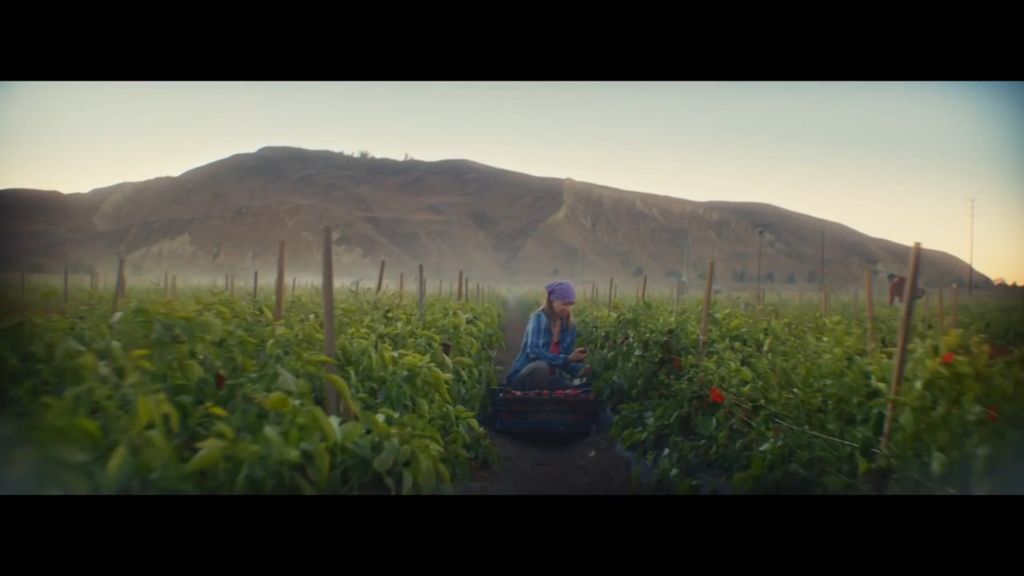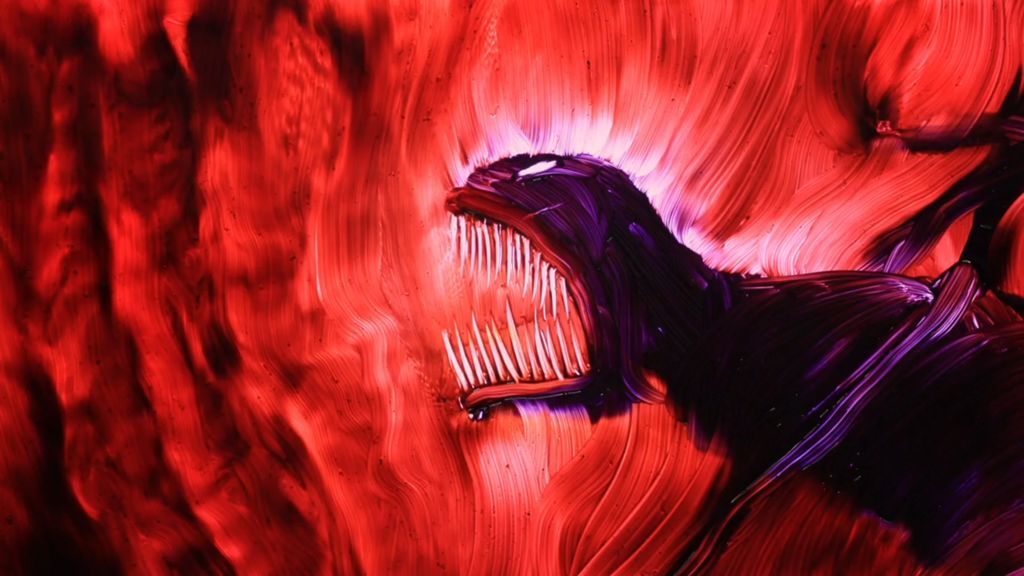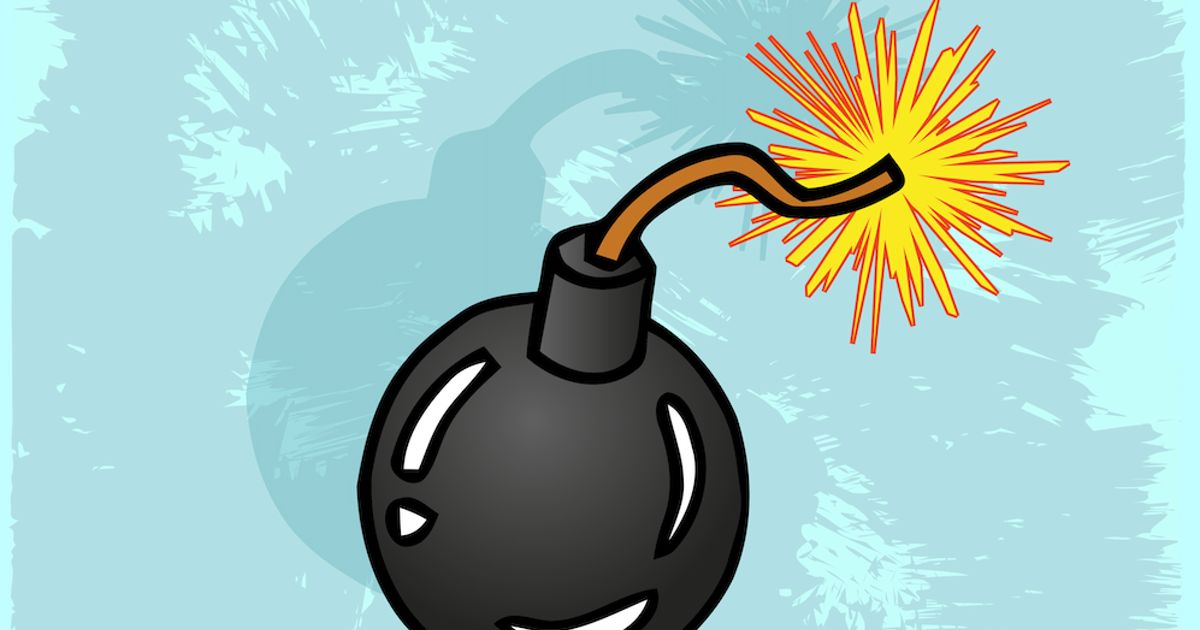Will animation companies still exist in five years' time?
It can be creative, distinctive and has the potential to work brilliantly for clients but, says The Moon Unit, animation is also facing a trifecta of troubles which present an explosive risk to the medium and the companies that facilitate it.
This article is not about artificial intelligence. Well, most of it isn’t.
You’ve probably read a ton of AI catastrophe-porn; predictions of the end for directors, storyboard artists, creatives... perhaps all of humanity. But, sadly, the animation industry is under threat for other reasons as well.
After a short-lived bump during Covid, animation for advertising has declined and now faces a trifecta of challenges.
Inherently, animation works brilliantly for advertising. After all, it enables us to create the fantastical (which is great for jaded consumers' eyeballs) and it allows us to create a distinctive visual world (which is great for brand-building). But, after a short-lived bump during Covid, when live-action shooting was restricted, animation for advertising has declined and now faces a trifecta of challenges that pose an existential threat.
Credits
powered by
-
- Production Company Nexus Studios/UK
- Director Johnny Kelly
-
-
Unlock full credits and more with a Source + shots membership.
Credits
powered by
- Production Company Nexus Studios/UK
- Director Johnny Kelly
- Executive Producer Cedric Gairard
- Director of Photography Matthew Day
- Producer Liz Chan

Credits
powered by
- Production Company Nexus Studios/UK
- Director Johnny Kelly
- Executive Producer Cedric Gairard
- Director of Photography Matthew Day
- Producer Liz Chan
Above: Chipotle's Back to the Start, from 2011. A masterpiece of emotional filmmaking, told using animation.
Firstly, marketers and their agencies want everything faster, and animation takes time. Secondly, marketers and their agencies want everything cheaper, and animation costs money. And thirdly, AI. Yes, sorry. AI. Few ads are more iconic than Chipotle’s Cannes Grand Prix-winning 2011 film Back to the Start; two minutes of beautifully sensitive animated storytelling from Nexus, accompanied by Willie Nelson’s haunting rendition of Coldplay's The Scientist.
It doesn’t take a genius to see it’s getting harder, and therefore more expensive, to reach people.
Chipotle’s 2021 commercial was written to the exact same brief, but it’s an embarrassingly anaemic shadow of the original. And it’s live-action (with only medium-level production values). So, why did Chipotle move away from animation*? Cost was almost certainly a factor. The top-rated non-football show on US television so far this year is NCIS, with 10 million viewers. Twenty years ago, American Idol had 38 million viewers. Forty years ago, M*A*S*H had 106 million viewers. It doesn’t take a genius to see it’s getting harder, and therefore more expensive, to reach people.
Another clue is that Chipotle’s 2021 ad is only 60 seconds long. Which is almost generous nowadays, with advertisers increasingly turning to 15- and 10-second formats. Chipotle is being forced to spend more on media, which means it is desperate to cut costs on production. And animation isn’t cheap. Especially in an era when brands are having to produce more and more content.
[*Chipotle actually commissioned another animated spot in 2021, A Future Begins; shots editorial team]
Credits
powered by
- Agency Venables Bell & Partners/San Francisco
- Production Company SMUGGLER
- Director Mark Molloy
-
-
Unlock full credits and more with a Source + shots membership.
Credits
powered by
- Agency Venables Bell & Partners/San Francisco
- Production Company SMUGGLER
- Director Mark Molloy
- Founder, Chairman Paul Venables
- Executive Producer Brian Carmody
- Executive Producer Patrick Milling-Smith
- Executive Producer Sue Yeon Ahn
- Head of Production Alex Hughes
- Production Designer Justin Allen
- Editorial Work Editorial/USA
- Editor Stewart Reeves
- Assistant Editor Josh Sasson
- Executive Producer Marlo Baird Kinsey
- VFX Alt.vfx/USA
- Head of VFX Andrew Hellen
- 2D Supervisor Matthew Chance
- Executive Producer Chris Fieldhouse
- Music Q Department
- Audio Mix Lime Studios
- Audio Mixer Loren Silber
- Executive Producer Susie Boyajan
- Senior Audio Producer Kayla Phungglan
- Line Producer Catalina (Cat) Restrepo
- DP Paul Meyers
- Post Producer Paloma Wodehouse
- VFX Supervisor Jan Cilliers
- Art Director Paul Rice
- Associate Creative Director/Art Director Greg Coffin
- Associate Creative Director/Copywriter James Duffy
- Associate Producer Livia Biedermann
- Chief Creative Officer Will McGinness
- Creative Director Gus Johnston
- Executive Producer Christina Wells
- HP Hilary Coate

Credits
powered by
- Agency Venables Bell & Partners/San Francisco
- Production Company SMUGGLER
- Director Mark Molloy
- Founder, Chairman Paul Venables
- Executive Producer Brian Carmody
- Executive Producer Patrick Milling-Smith
- Executive Producer Sue Yeon Ahn
- Head of Production Alex Hughes
- Production Designer Justin Allen
- Editorial Work Editorial/USA
- Editor Stewart Reeves
- Assistant Editor Josh Sasson
- Executive Producer Marlo Baird Kinsey
- VFX Alt.vfx/USA
- Head of VFX Andrew Hellen
- 2D Supervisor Matthew Chance
- Executive Producer Chris Fieldhouse
- Music Q Department
- Audio Mix Lime Studios
- Audio Mixer Loren Silber
- Executive Producer Susie Boyajan
- Senior Audio Producer Kayla Phungglan
- Line Producer Catalina (Cat) Restrepo
- DP Paul Meyers
- Post Producer Paloma Wodehouse
- VFX Supervisor Jan Cilliers
- Art Director Paul Rice
- Associate Creative Director/Art Director Greg Coffin
- Associate Creative Director/Copywriter James Duffy
- Associate Producer Livia Biedermann
- Chief Creative Officer Will McGinness
- Creative Director Gus Johnston
- Executive Producer Christina Wells
- HP Hilary Coate
Above: Chipotle's 2021 spot, in which a boy eats a burrito and delivers a laundry list of proof-points.
Back in 2011, when Back to the Start was created, TikTok didn’t exist, Instagram Stories didn’t exist, and video advertising on Facebook and YouTube was in its infancy. Chipotle, as far as I know, produced only one film that year, and another came in 2013 (a second classic – The Scarecrow). Could you imagine a brand the size of Chipotle producing just one solitary film in the year 2023? It’s unthinkable.
In a world where brand-building (one of animation’s great strengths) has become less popular, there just isn’t time for animation.
Indeed if you go to Chipotle’s social channels you will see they are brimming with video content. All of it cheaply produced, and none of it animation. We’re willing to bet some pretty big bucks that the vast majority of this content was turned around quickly. And that just can’t happen with animation. Typically, you’re looking at many weeks for cel animation, many more for CGI. Whereas live-action can be turned around in a week. Even less.
There are creatives shooting content on their phones nowadays, at their own desk or in some tiny corner of their ad agency, which major brands are happy to feature on their social channels. In a world where brand-building (one of animation’s great strengths) has become less popular, and advertisers are pumping out 10, 50 or even 100 films a year – Holy heck! We need a video to celebrate national quesadilla day next Tuesday – there just isn’t time for animation.
Credits
powered by
- Agency AMV BBDO/London
- Production Company Chelsea
- Director Nisha Ganatra
-
-
Unlock full credits and more with a Source + shots membership.
Credits
powered by
- Agency AMV BBDO/London
- Production Company Chelsea
- Director Nisha Ganatra
- Creative Director Toby Allen
- Creative Director Jim Hilson
- Executive Creative Director Nicholas Hulley
- Executive Producer Nadja Lossgott
- Producer Edwina Dennison
- Production Service PSN Production Service Network
- Executive Producer Pat McGoldrick
- Executive Producer Lisa Mehling
- Producer Shanah Blevins
- Editing Company Trim
- Editor Elise Butt
- Sound Design 750mph
- Sound Engineer Sam Ashwell
- Post Production Company Framestore/London
- Creative Director Animation Sharon Lock
- Colorist Simon Bourne
- DP Natasha Braier
- Flame Artist Tim Greenwood
- Chief Creative Officer Alex Grieve

Credits
powered by
- Agency AMV BBDO/London
- Production Company Chelsea
- Director Nisha Ganatra
- Creative Director Toby Allen
- Creative Director Jim Hilson
- Executive Creative Director Nicholas Hulley
- Executive Producer Nadja Lossgott
- Producer Edwina Dennison
- Production Service PSN Production Service Network
- Executive Producer Pat McGoldrick
- Executive Producer Lisa Mehling
- Producer Shanah Blevins
- Editing Company Trim
- Editor Elise Butt
- Sound Design 750mph
- Sound Engineer Sam Ashwell
- Post Production Company Framestore/London
- Creative Director Animation Sharon Lock
- Colorist Simon Bourne
- DP Natasha Braier
- Flame Artist Tim Greenwood
- Chief Creative Officer Alex Grieve
Above: Libresse’s #wombstories film, 2020. The mini-trend of mixed-media advertising has created more work for animation companies.
Of course there are exceptions. There is still incredible work being done by animators all across the planet for major brands. But, anecdotally, the industry is struggling. And then there’s AI.
Right now, Midjourney and its many clones may not be eating the industry’s lunch, but they are banging on the doors of the restaurant. So, will the animation industry survive? And, if so, what will it look like? The industry is certainly adapting, with stripped-down styles and ever-more-advanced software making jobs faster and cheaper. More powerful software may see an acceleration of the trend towards one-man-band animators rather than teams, which again reduces costs.
Midjourney and its many clones may not be eating the industry’s lunch, but they are banging on the doors of the restaurant.
There is also a mini-trend at the moment of advertising agencies creating ‘mixed media’ commercials. Notable recent examples include Libresse’s mega-award-winning #wombstories film from 2020, with animation by Framestore. This style doesn’t give an animation company an entire ad, but at least it gives them work.
We’ve known since Charles Darwin that the key to the survival of a species is its ability to adapt. So, to the question of whether animation companies will still exist in five years’ time, given the threats outlined above, the answer has to be ‘yes’… but only if they can evolve fast enough.
)













